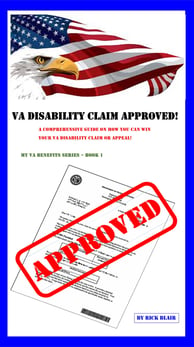Sample NEXUS Letter - Back & Bilateral Radiculopathy
NEXUS Letter - Back & Bilateral Radiculopathy
NEXUS LETTERSAPPEALS
Staff
12/31/20232 min read


Welcome to our sample NEXUS Letter guide for Back & Bilateral Radiculopathy. This resource provides a template to help you and your healthcare providers establish a clear medical nexus, supporting disability claims with the Department of Veterans Affairs. Use this as a tool for effective communication in the claims process.
I have reviewed Mr. Taylor’s prior treatment medical military personnel records believe it is at least as likely as not that his current back condition was caused by, the result of, or aggravated by his military service. Moreover, it is at least as likely as not that his bilateral lower extremity radiculopathy is caused by, the result of, or aggravated by his back condition.
I have considered his personal testimony and reviewed his prior treatment and post-service medical records, allowing more probative value to the treatment within the first years after separation, while following the etiology of the condition to date. While in service, he reports that he was a young, strong paratrooper with a “gung-ho” attitude and rarely complained of physical ailments to avoid the ridicule of his peers and the fear of being removed from ready jump status. As such, Mr. Taylor states that during and post service, he routinely utilized extra-strength Tylenol and other over-the-counter medication, ice, heat, and rest when his back pain flared. That would explain why there is little direct medical evidence in his service treatment records that would seemingly support a disability claim for a back disability several years post military service.
However, in a recent National Institute of Health’s (NIH) study in the Public Medical Database titled, “Evaluation and Management of Vertebral Compression Fractures,” it is noted that “vertebral compression injuries have an insidious onset and may produce only low-grade back pain initially. Over time, the injury often leads to progressive loss of stature and continuous contraction of the paraspinal musculature to maintain posture. This combination results in fatigued muscles and pain that often continues even after the original compression injury has healed. In another study located in the NIH medical library titled,, “Cervical spine injury patterns in three modes of high-speed trauma: a biomechanical porcine model,” 16 three-vertebrae segments were subjected to flexion-compression, extension-compression, and compression-alone trauma modes, with the results analyzed for variance with trauma mode using nonparametric analysis. The three modes of trauma were found to have statistically significant degrees of injury to the spine and its structural components, with the severity of anatomic injuries in these models relating most to the addition of bending moments to high-speed axial compression of the spine segment, such as that demonstrated by the movements associated with paratrooper jump activities.
Mr. Taylor reports that as a young man, his back bothered him sporadically, especially with intense physical activity. But as he aged, he noted that his back pain and range of motion significantly worsened, with subsequent impingement of nerves resulting in radiculopathy down his bilateral lower extremities. Given his personal and medical history, rigors of military service in the field and during training, such as jumping out of airplanes and forced marches, the nature of compression type injury and it’s resulting degenerative joint disease, chronicity of arthralgia and lack of any other obvious etiology, it is at least as likely as not that his back condition was caused by, the result of or aggravated by his military service and the resulting radiculopathy a byproduct of the injured back.
Sponsored Advertisement
Sponsored Advertisement



